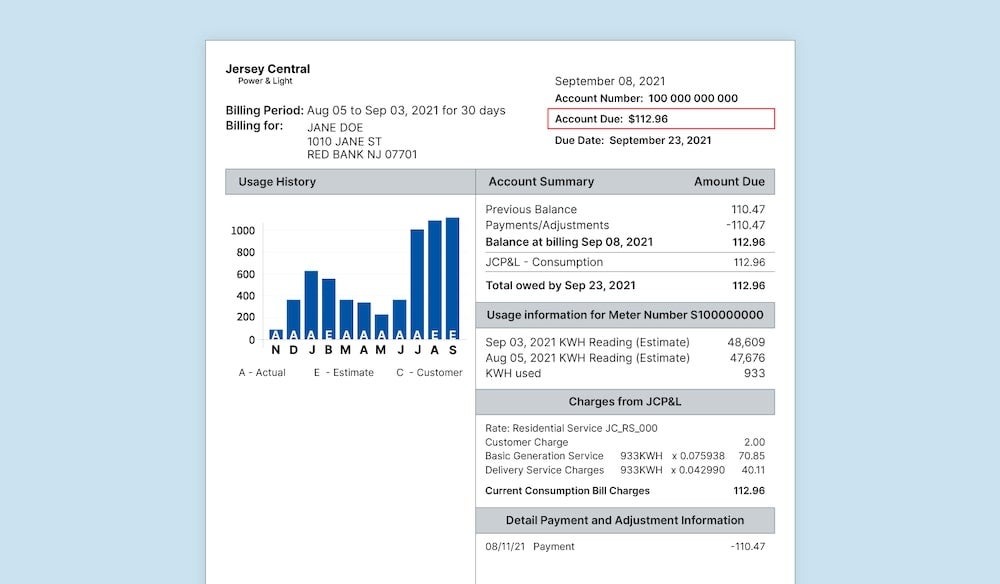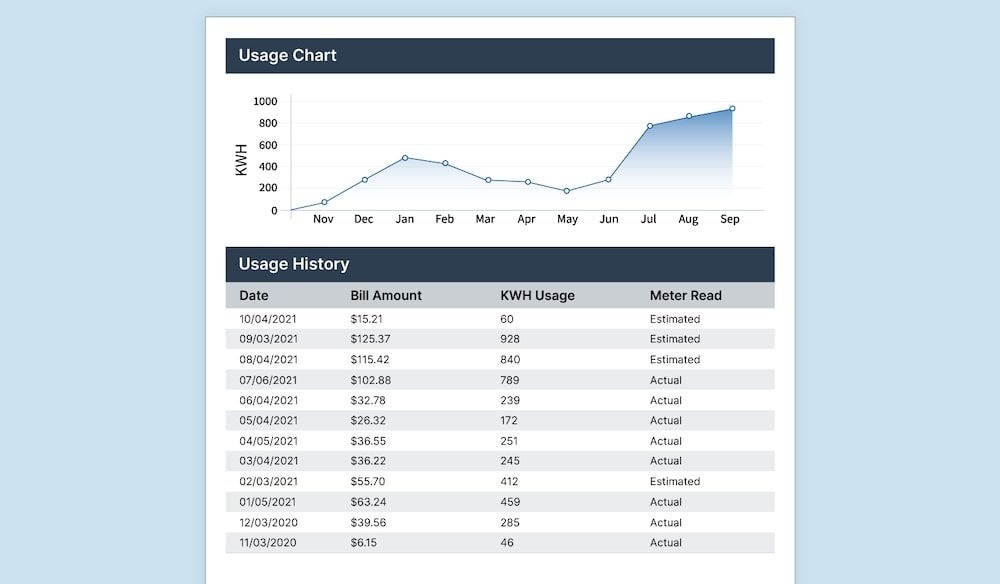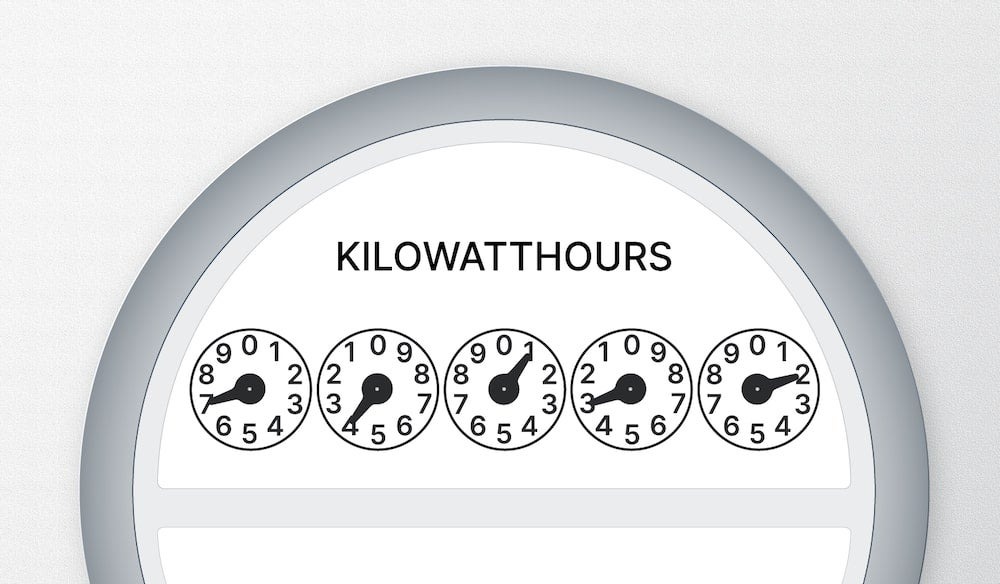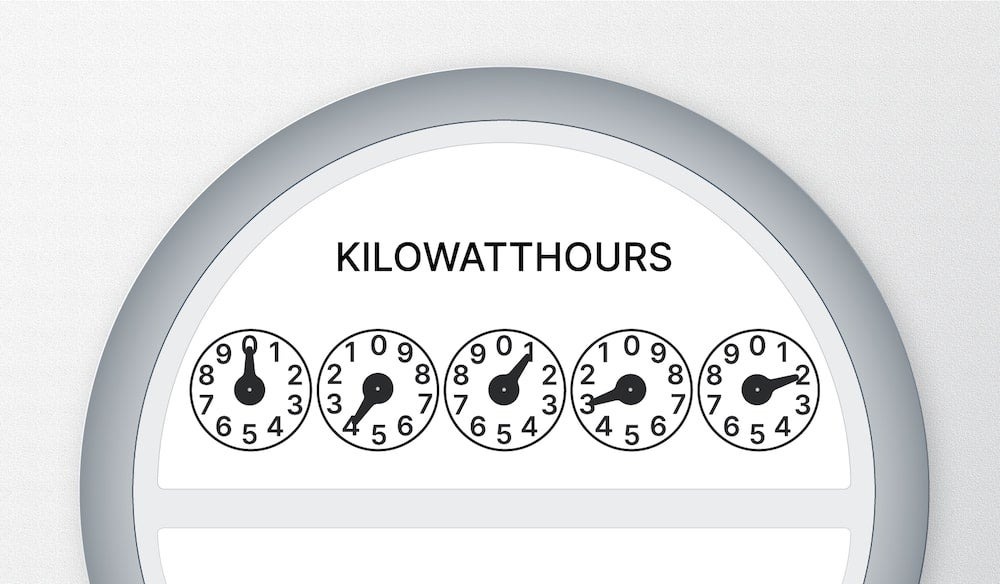Updated 3 months ago
The Correct Way to Read Your Electricity Bill
Written by Ana Almerini Ana AlmeriniAna is the Marketing & Communications Manager at SolarReviews, working within the solar industry since 2020. With a Master's in Climate and Society an...Learn more

Why you can trust SolarReviews
SolarReviews is the leading American website for solar panel reviews and solar panel installation companies. Our industry experts have a combined three decades of solar experience and maintain editorial independence for their reviews. No company can pay to alter the reviews or review scores shown on our site. Learn more about SolarReviews and how we make money.
Reading your electric bill can aid you in taking control of your energy use, reducing the price of your bill, and even help to determine how many solar panels you need.
One important thing to note is that solar panels protect you from rising electricity rates. Over time, utilities increase electricity costs to keep up with repairs and worker salaries. If you have solar on your home and use little or no grid electricity, you will not be paying increased rates over the years.
In this article, we will walk you through all of the jargon on your bill, how you can determine your typical energy use, and how switching to solar will help you reduce your electric bill.
First step: determine which utility bill plan you have
Different utility companies charge customers in different ways for electricity. These rates are what you will pay based on the amount of kWh you use each month.
The most common rates are fixed, time-of-use, and variable rates.
Fixed-rate
Fixed-rate utility costs are the simplest to understand. No matter the time, day, or season that you use your electricity, you will be charged the same price per kWh.
Time-of-use
Time-of-use rates vary for each utility that uses them. The basic way that time-of-use rates work is that you are charged a different amount based on which time of the day you use your electricity.
For example, the majority of people are at work between the hours of 9 AM and 5 PM. Before they leave for the day and after they return home at night, the electricity demand is at its highest. Utility companies attempt to discourage electricity use during high-demand periods and will charge consumers more for using electricity during those hours.
Variable rates
The most insidious of rate plans, variable rates change on a whim depending on how much it costs utilities to provide power that month. Costs to supply electricity to your home can change based on many factors ranging from higher transportation costs to a low supply.
Variable rates can also change based on the season or be increased if a customer uses more than a certain amount of kWh per month. Each utility is different.
In some areas free of utility monopolies, consumers can shop around with variable-rate plans and are not locked into a contract. This can catch you in a bind if an extreme weather event occurs and prices suddenly spike.
Which utility rate option is right for me?
Some utility rate options are better than others. Fixed rates make it much easier to anticipate your electricity charges while time-of-use rates or variable rates can vary wildly from month to month.
In most locations, utility customers have no choice in what type of rate plan they have. If you have time-of-use billing or variable rates, solar panels are an attractive option because you know what to anticipate each month: a low electricity bill.
What is a kWh and why does it matter?
Once you’ve determined how you are billed for your electricity, you then need to pinpoint your monthly kWh use. In this example bill, we are using a fixed rate utility plan.
To define a kilowatt-hour (kWh), you need to start with watts. A watt is a measure of power, and a watt-hour is a measure of energy used to provide that power. A kilowatt-hour is 1,000 watts and is a way to record an average output of 1,000 watts over time.
This is how you can measure the average amount of watts that was used to power your home over a period of time. Typically with an electric bill, it’s over a monthly time frame.
In the sample bill below, you can see that the number of kWh used over the month was 933 kWh or 933,000 watts, slightly over the U.S. monthly average. But, this is only a one-month snapshot.

To determine your average kWh usage, you need to know how many kWh you use over the entire year. Many utility sites provide a use-over-time page, as you can see below. After averaging the kWh over the year, the amount is 398kWh - this is well below the U.S. average of 877 kWh a month.

Knowing this number can help you decide to either work on reducing it or determining how many solar panels will keep your electricity running year-round.
Understanding the hidden costs in your electric bill
As if paying for the electricity was not enough, other charges appear on your utility bill. The most common are supply/generation charges, delivery charges, and customer charges.
Supply and generation charges
This is the cost of generating the amount of electricity that was supplied to you. The total of this charge will depend on the amount of kWh you used that month multiplied by the type of rate you are billed with. In the bill sample, the supply charges are $70.85.
Delivery charges
Delivery charges are the added cost it takes for the electricity to get to you by traveling via the grid, power lines, and the power plants themselves. This delivery charge is meant to pay for upgrades needed to electricity systems and will most likely increase over the years as climate change leads to more grid failures while the grid itself continues to age.
For the bill sample, this charge is combined into one kWh charge, or .042990 x 933 kWh used to total $40.11 of the bill.
Customer charge
The customer charge is a fixed monthly charge that you are billed for the pleasure of being their utility customer. This cost remains the same regardless of the amount of energy you use but is subject to increase over time.
If you want a way to keep an eye on your electricity use to anticipate how much your bill might be, you can read the electric meter outside of your property.
How to read your meter
The meter that typically sits outside of your house or apartment is constantly keeping track of the electricity your home is using. This is what utility companies look at when they “read the meter” to determine how much electricity you used and thus, how much you should be charged.
You can see on your bill that sometimes the meter read says it is “actual” or “estimated”. “Actual” means that someone did actually look at your meter to determine the kWh use that month.
If it is “estimated”, the electricity amount is an assumption based on average kWh hour use and projected monthly use. If the estimate is more or less than the actual reading, that amount will be fixed during the next actual reading.
If you do not have an electric meter but a dial meter, read and write down the numbers as shown on the dials from right to left. There should be five dials each with the numbers 0 to 9. Read the first one on the right, if the arrow is between two numbers, the lower number is the one to read. As an example, the below mock-up shows 23,147 kWh.

If for some reason one of the dials did not pass zero, use the lower number. In this case, if the furthest left dial read 0, you would read the fourth dial as 3 to total 2,313 kWh.

To anticipate your electric bill, you can read your meter on the first day of the month and the last day to see how many kWh your home used over those days.
If you go solar, your meter will calculate how much electricity you are sending back to the grid. Before installing solar, many utilities will install a more modern smart meter that can more actually track the amount of electricity you produce and send it back to the grid.
Your electricity bill: what to do now
Aside from being a more informed electricity consumer, you can help determine if solar panels are worth it for you – especially if you can pay cash. Cash payments shield you from rising electricity costs and will save you money each month.
The rule of thumb is that if you plan to stay in your home for more than 25 years, solar is always a cost-saving choice.
Ana is the Marketing & Communications Manager at SolarReviews, working within the solar industry since 2020. With a Master's in Climate and Society and professional experience in marketing, she helps communicate the value of solar to homeowners and build awareness of the SolarReviews brand. On weekends you can find her at the Jersey shore, reading a book from the ever-increasing stack on her side table, or eating food someone else cooked....
Learn more about Ana Almerini